Pioneer 10 began its unprecedented multi-year journey from Earth on March 2, 1972. Managed by NASA’s Ames Research Center (ARC) in California’s Silicon Valley, it was the first spacecraft designed to travel beyond the orbit of Mars. Pioneer 10’s primary goal was to explore the gas giant planet Jupiter, its satellites, and its magnetic field and trapped radiation belts. The spacecraft reached its target 21 months after launch. Along the way, it completed the first crossing of the Asteroid Belt. Following its encounter with the solar system’s largest planet, Pioneer 10 continued to explore interplanetary space in the outer reaches of the solar system, and eventually became the first spacecraft sent on a trajectory to leave the solar system and enter interplanetary space.
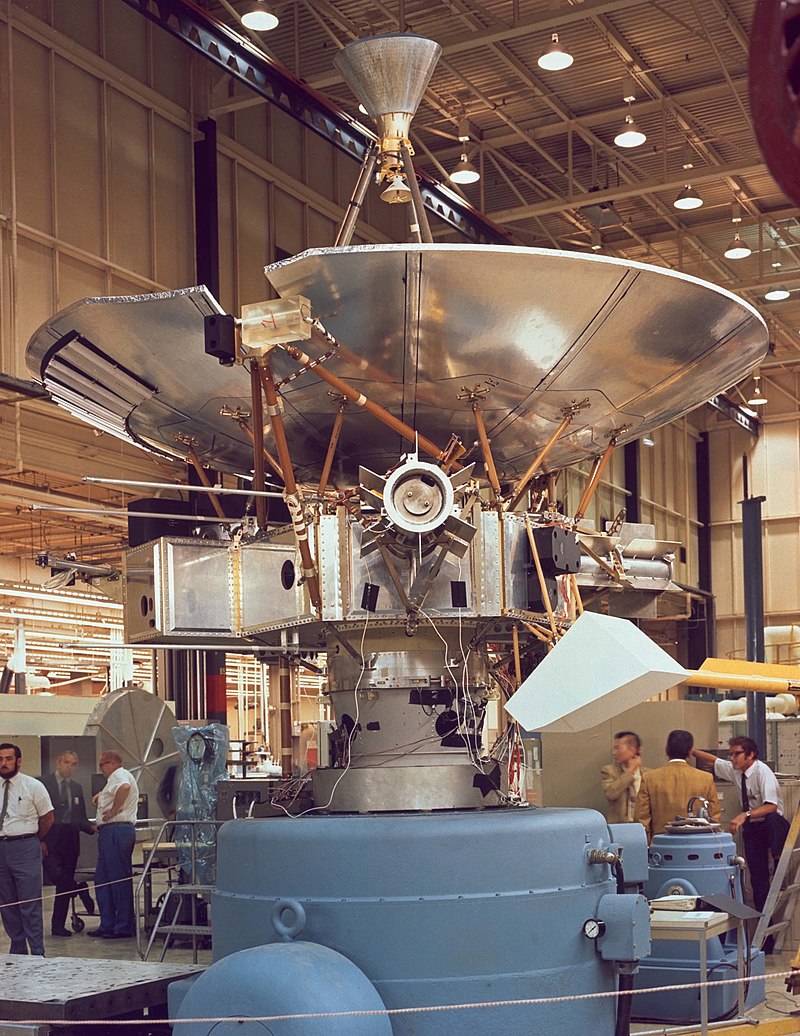

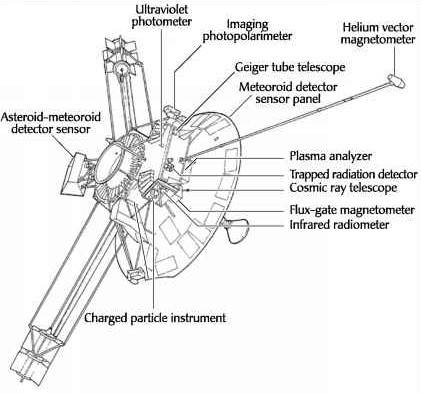
Left: Pioneer 10 during assembly. Middle: Launch of Pioneer 10 from Cape Kennedy Air Force Station, now Cape Canaveral Space Force Station in Florida. Right: Diagram of Pioneer 10 showing its instruments.
In February 1969, NASA approved a two-spacecraft project to explore Jupiter as part of the Pioneer program managed by ARC. A year later, NASA awarded a contract to the TRW Company of Redondo Beach, California, to build the two spacecraft. The 571-pound spacecraft carried 11 instruments for the close-up study of Jupiter and interplanetary space during the journey:
- a helium vector magnetometer to measure Jupiter’s magnetic field;
- a quadrispherical plasma analyzer, a charged particle instrument, a cosmic ray telescope, a Geiger tube telescope, and a trapped radiation detector to measure the solar wind and radiation levels;
- meteoroid detectors and an asteroid/meteoroid detector to record interplanetary dust particles;
- an ultraviolet photometer to determine the quantities of hydrogen and helium in space and on Jupiter;
- an imaging photopolarimeter to return images of the planet; and
- an infrared radiometer for temperature measurements.
Pioneer 10 used plutonium-238 in two radioisotope thermal generators (RTG) to supply power to its systems and instruments, since at the giant planet’s distance from the Sun, capturing enough solar energy would have required prohibitively large solar arrays.
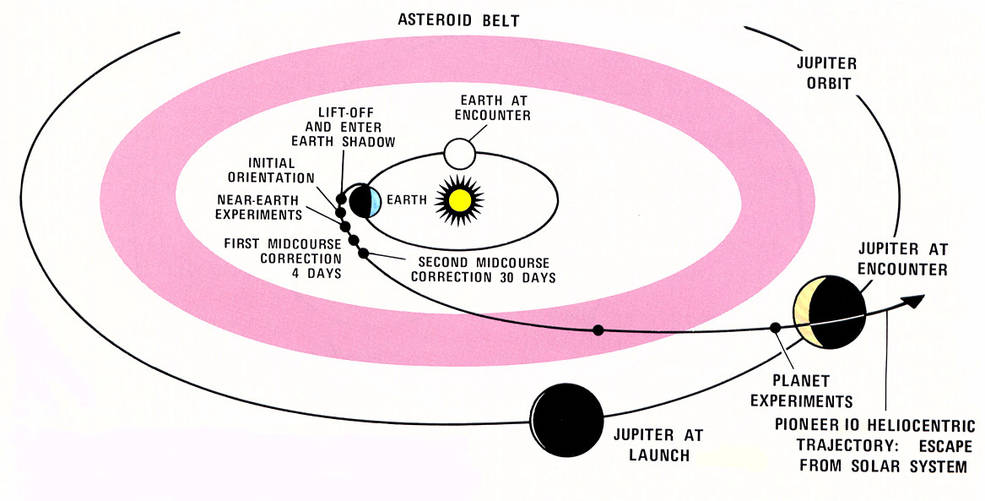
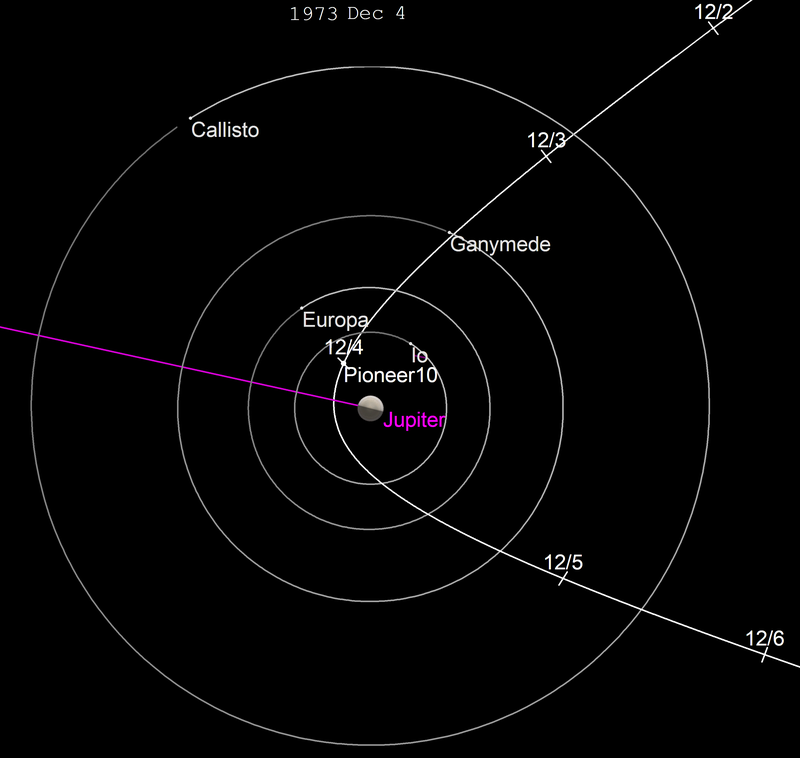
Left: Pioneer 10’s trajectory through the solar system from Earth to Jupiter. Right: Pioneer 10’s trajectory through the Jovian system.
Following its launch from Cape Kennedy Air Force Station, now Cape Canaveral Space Force Station in Florida, its Atlas-Centaur rocket’s third stage propelled Pioneer 10 toward Jupiter, making it the fastest human-made object up to that time. Traveling at 32,114 miles per hour after leaving Earth, Pioneer 10 passed the orbit of the Moon in less than 11 hours. Just four months later, on July 15, it left the inner solar system and became the first spacecraft to enter the asteroid belt. At the time, it was uncertain whether it would traverse it safely since the density of particles large enough to damage the craft was not yet known. It passed within 5.5 million miles of an unnamed 0.5-mile diameter asteroid on Aug. 2 and the 15-mile wide asteroid 307 Nike on Dec. 2. After seven months, on Feb. 15, 1973, Pioneer 10 emerged from the asteroid belt unscathed. During its interplanetary flight from Earth, Pioneer 10 made measurements of the solar wind, and in August 1972, in conjunction with several Pioneer solar orbiting spacecraft, it recorded details of a massive solar storm.
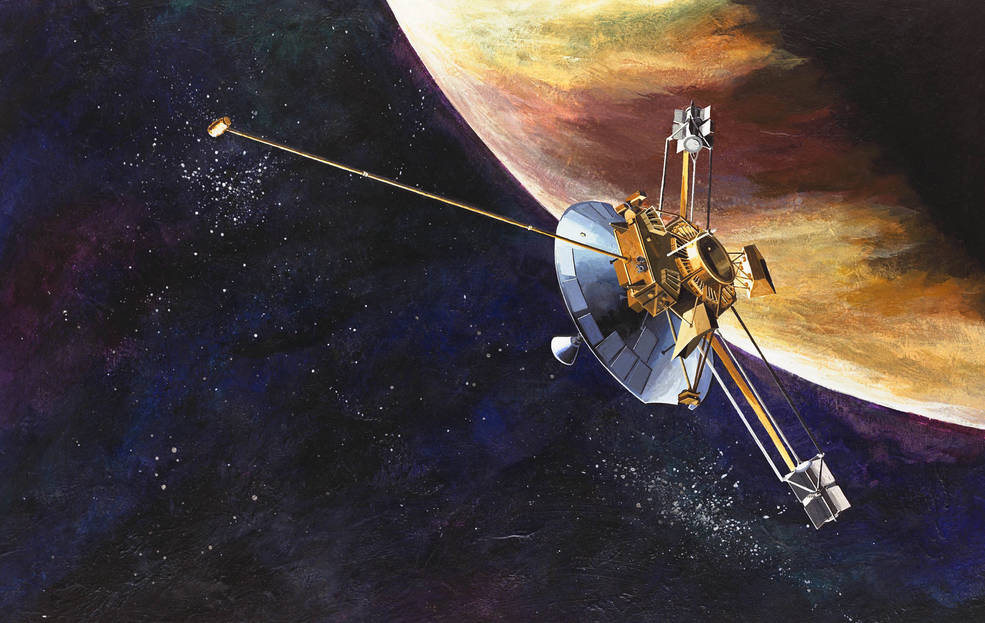
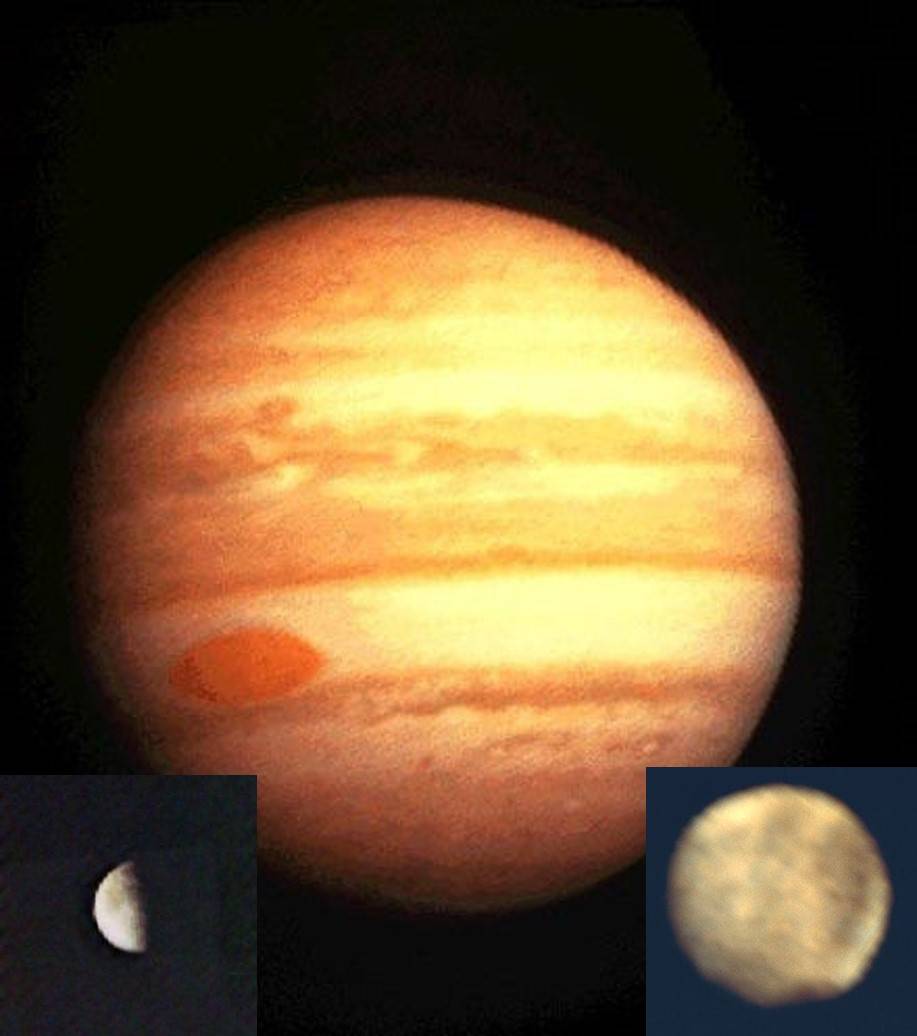
Left: Illustration by Rick Guidice of Pioneer 10 during its encounter with Jupiter. Right: Composite of Pioneer 10 images of Jupiter and two of its largest moons, Europa (left inset) and Ganymede (right inset)– note: the planet and satellites are not to scale.
On Nov. 6, 1973, while still 16 million miles from Jupiter, Pioneer 10 began to image the giant planet with the photopolarimeter, and shortly thereafter began to take measurements with its other instruments as well. Twenty days later, the spacecraft passed the front of Jupiter’s bowshock, where the solar wind clashed with the planet’s magnetosphere. By Dec. 1, the spacecraft was returning images of the planet exceeding the best pictures from Earth. Two days later, Pioneer 10 raced by Jupiter at a distance of 82,178 miles and traveling at 78,000 miles per hour, with six of its instruments operating continuously during the closest approach. The spacecraft also captured low resolution images of Callisto, Ganymede, and Europa, three of the four large Galilean moons of Jupiter. An image of the fourth Galilean satellite Io was taken but lost to the intense radiation environment around the planet. After its closest approach, Pioneer 10 passed behind Jupiter as seen from Earth. By analyzing the spacecraft’s radio transmissions, scientists could infer information about the planet’s atmosphere. During the encounter that ended Jan. 2, 1974, Pioneer 10 returned 500 images of the planet and its satellites.
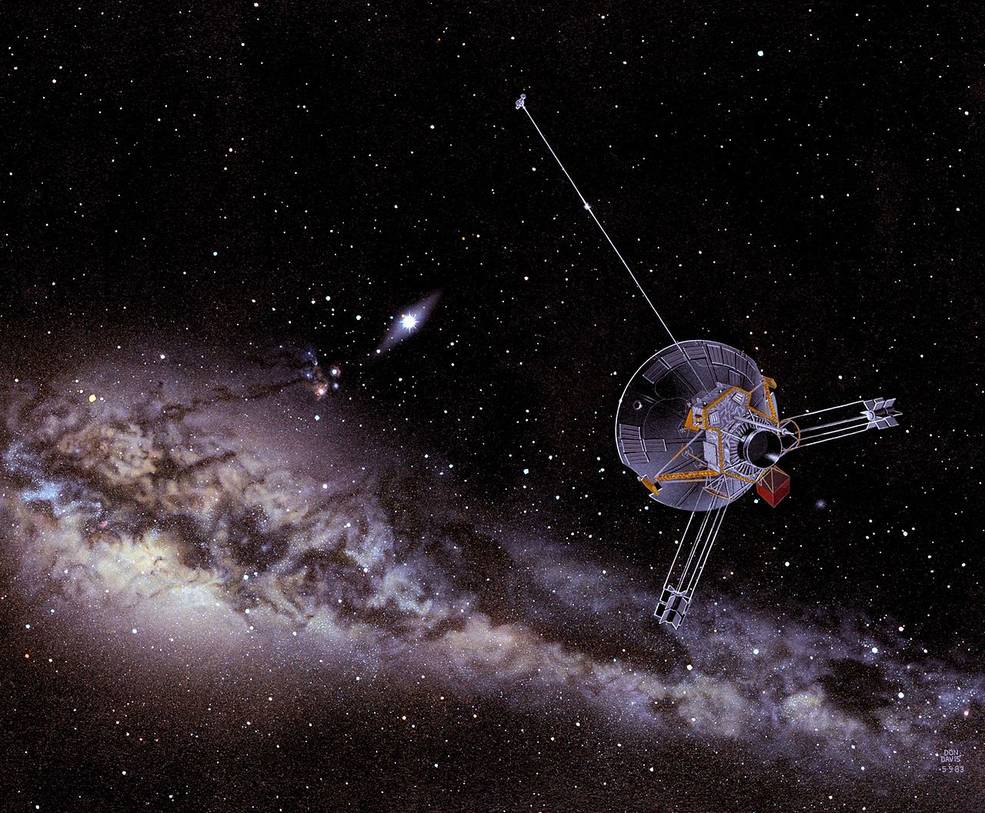
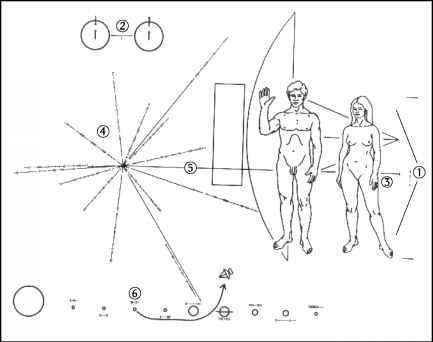
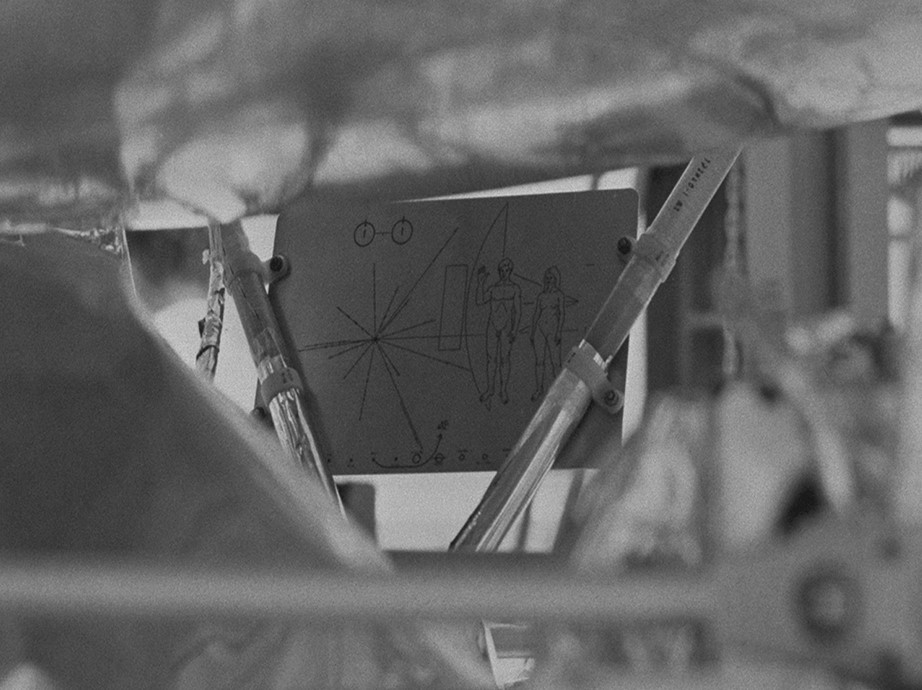
Left: Illustration of the spacecraft entitled Pioneer 10 Leaving the Planets Behind, by Don Davis. Middle: Drawing of the plaque carried by Pioneer 10, with information about its creators, in case an intelligent alien civilization finds the spacecraft. Right: The plaque installed on Pioneer 10.
Planned for 21 months of operations, just long enough to reach Jupiter and study the giant planet, Pioneer 10 far outlived those expectations, continuing to return data on interplanetary space in the outer reaches of the solar system. On June 13, 1983, it passed the orbit of Neptune, the outermost planet, and became the first human-made object to leave the outer planets behind. NASA maintained regular contact with Pioneer 10 until March 31, 1997, and intermittent contact thereafter. The power generated by its RTG’s had diminished to the point where it could no longer keep Pioneer’s transmitter operating, and the spacecraft sent its last signal to Earth on Jan. 23, 2003, nearly 31 years after its launch, when it was 7.6 billion miles from Earth. That final signal from Pioneer 10 took 11 hours and 20 minutes to reach its home planet. Should an advanced alien civilization find Pioneer 10, it carries a plaque providing information about its creators and where it originated. The spacecraft is headed generally in the direction of the star Aldebaran, and is expected to reach it in about two million years. A full-scale mockup of Pioneer 10 is on display in the Milestones of Flight exhibit at the Smithsonian Institution’s National Air and Space Museum in Washington, D.C.
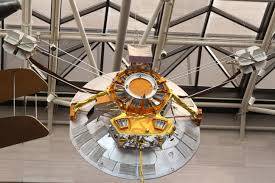
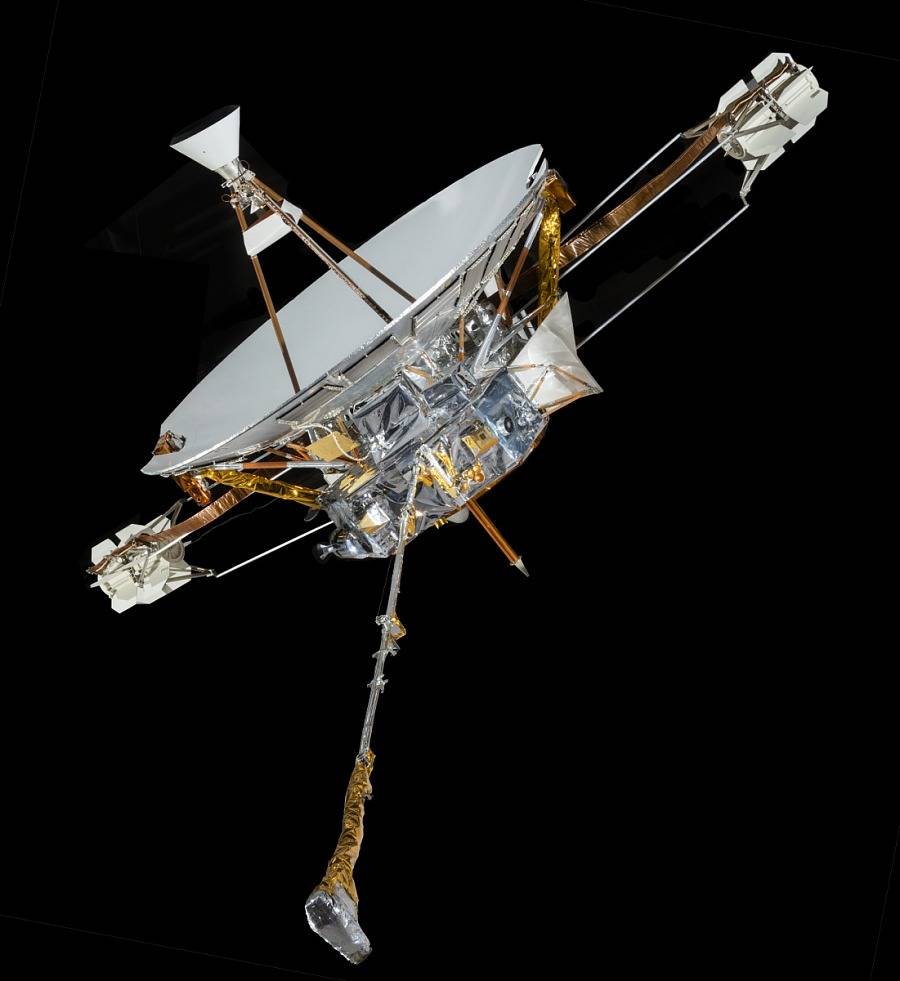
Two views of the Pioneer 10 mockup at the Smithsonian Institute’s National Air and Space Museum (NASM). Image credits: courtesy of NASM.
John Uri
NASA Johnson Space Center


























